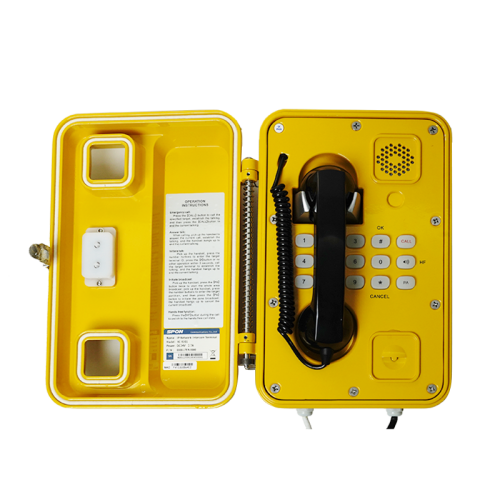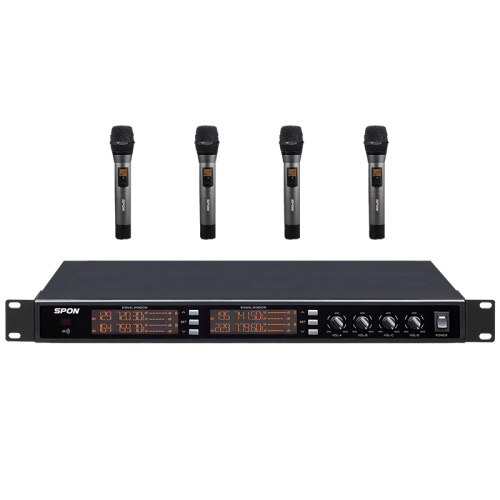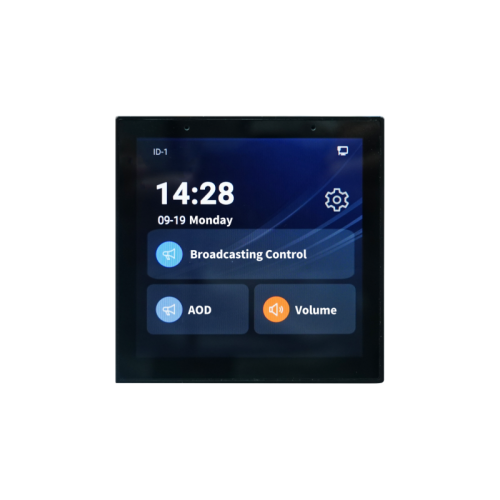Comprehensive Overview to Public Address Systems
Public address (PA) systems are commonly encountered in different tasks such as office complex, property facilities, commercial office complex, institutions, healthcare facilities, train stations, flight terminals, bus factories, stations, and financial institutions - SPON Communications. This guide will certainly give an in-depth review of PA systems

Parts of a System
Despite the kind of PA system, it usually contains 4 primary components: resource equipment, signal amplification and handling equipment, transmission lines, and audio speaker systems.
Resource Tools
Music Gamers: Used for background songs.
Microphones: Includes standard microphones and zone-select microphones.
Voice Storage Space Tools: For keeping service and emergency situation broadcast messages.
Signal Processing and Boosting Tools
Sound Signal Cpu: Deals with audio signal compensation, attenuation, equalization, etc.
Pre-Amplifier: Pre-amplifies sound signals.
Power Amplifier: Enhances audio signals to drive speakers, offering constant voltage output.
Transmission Lines
The solution monitoring platform software program permits the surveillance facility to apply centralized governance over the program and intercom communication systems. It promotes real-time gadget status tracking, fault diagnosis, and troubleshooting, solidifying system reliability and consistency.
Speakers
Ceiling Speakers: Indoor, flush-mounted in the ceiling, constant voltage or consistent insusceptibility.
Wall-Mounted Speakers: Wall-mounted, continuous voltage or constant impedance.
Column Audio Speakers: Free-standing, ideal for exterior or indoor use.
Horn Audio speakers: High level of sensitivity, ideal for indoor or outdoor usage.
Concealed Speakers: For exterior setups like parks or yards, designed to look like stumps, rocks, or mushrooms.
Audio Technical Specs of PA Equipments
In everyday atmospheres, common sound pressure levels are:.
• Workplace noise: 50-60 dB.
• Normal discussion: 65-70 dB.
• Fabric manufacturing facility noise: 110-120 dB.
• Small caliber gunfire: 130-140 dB.
• Large jet airplane sound: 150-160 dB.
Signal-to-Noise Ratio (SNR)
SNR determines the proportion of the signal voltage to sound voltage, expressed in decibels. A higher SNR shows much less noise and better audio top quality. Normally, SNR needs to be at least 63 dB, with high-fidelity audio speakers getting to over 110 dB.
Input Level of sensitivity
This is the minimum input voltage required to achieve the ranked outcome power. Greater level of sensitivity suggests less input signal is required. Typically, power amplifiers have an input level of sensitivity of 0.775 V (0 dB) to 1.5 V (+6 dB).
Maximum Output Power (Audio Speakers)
The maximum power an audio speaker can manage basically bursts without damage.
Rated Power (Audio Speakers)
.
The continuous power a speaker can deal with without distortion, measured in watts (W) Ranked power is an ordinary worth, and speakers can manage peak power up to 2-3 times the rated power.
Continuous Voltage vs. Consistent Impedance Outputs
Continuous Voltage (70V or 100V)
Makes use of voltage to drive speakers, enabling longer transmission ranges and numerous speakers in parallel. Audio high quality is somewhat substandard compared to constant impedance systems.
Power amplifiers have to match the voltage ranking of the speakers to avoid damage.
Continuous Insusceptibility.
Makes use of existing to drive speakers, providing much better audio top quality but restricted transmission range (approximately 100 meters)
Impedance matching is important; for instance, an 8Ω amplifier must be matched with 8Ω audio speakers.
Choose and Configuring Audio Speakers
Audio speaker Option
Indoor Spaces with Ceiling: Usage flush-mounted ceiling audio speakers without a back cover.
Indoor Spaces with Just a Framework: Use ceiling speakers with rear covers or hanging ball-type speakers.
Exterior Locations: Usage weatherproof column audio speakers or horn audio speakers.
Parks and Gardens: Usage concealed audio speakers made for visual objectives.
High-End Interiors: Usage classy dangling audio speakers.
Fire-Safe Areas: Use fire-resistant speakers with closed styles.
Audio speaker Setup
Speakers must be dispersed equally across the solution location to make certain a signal-to-noise ratio of at the very least 15 dB. Typical history noise levels and advised audio speaker placement are:.
Premium workplace passages: 48-52 dB.
Large buying malls: 58-63 dB.
Busy road locations: 70-75 dB.
Speakers ought to be put to make sure a sound stress level of 80-85 dB in many environments. Ceiling speakers ought to be spaced 5-8 meters apart, or 8-12 meters for history songs only. For emergency situation broadcasts, make certain that no location is more than 15 meters from the nearby speaker.
Amplifier Sizing
Estimation Technique:
For solution and service PA systems: P= K1 × K2 × ΣPo where:.
P = Total amplifier result power (W)
K1 = Line loss payment element.
K2 = Aging factor (1.2-1.4)
ΣPo = Complete power demand.
For emergency alarm systems, make use of 1.5 times the total variety of speakers.
Example Estimation:
For a history songs system with 10 speakers at 20W each: P= 1.26 × 1.2 × 10 × 20W × 0.7= 211W.
Last amplifier capacity need to be 1.3 times this worth: 211W × 1.3= 274W
Installation Needs
Audio speaker Positioning
Speakers must be equally and purposefully distributed to satisfy coverage and sound top quality requirements
Power Supply
Little PA systems can use routine power electrical outlets, while systems over 500W call for a devoted power supply. Power needs to be stable, with automatic voltage regulatory authorities if necessary. The power supply must be 1.5-2 times the tools's power consumption
Cord and Conduit Installation
Use copper-core cords for signal transmission. Wires should be protected and directed via ideal conduits, preventing disturbance from electric lines. Ensure proper separation between power and signal lines.
Lightning Protection and Grounding
PA systems need appropriate grounding to protect against damages from lightning and electric disturbance. Use dedicated grounding for devices and make sure all basing measures meet security criteria
Setup Top quality
Wire and Port Quality
Use top notch wires and adapters. Make certain links are safe and secure and appropriately matched to stay clear of signal loss or disturbance.
Speaker Connections
Maintain right stage positioning between speakers. Usage reputable methods for connecting wires, such as incurable or soldering blocks, and secure links from ecological damage.
Grounding and Safety Checks
Verify all grounding is appropriately set up and check the safety of power links and devices settings. Do complete assessments before completing the installation.
Checking and Modification
Examine the whole system to guarantee all parts work correctly and meet layout specs. Adjust setups as needed for optimal efficiency.
Craftsmanship Needs for Public Address Equipments
Building And Construction High Quality Demands
The top quality of building in a public address (PA) system project is essential to fulfilling design requirements and user needs. It is vital to purely follow the style strategies, stick to requirements, stay clear of rework and hold-ups, and preserve in-depth construction logs. Secret locations to concentrate on consist of:
Cable Selection and Setup
Throughout the construction of a PA system, interest is frequently concentrated on tools, but the choice of transmission cords is additionally vital for accomplishing acceptable sound top quality. High-quality broadcasting devices (amplifiers, audio speakers, and so on) is necessary, but the high quality of the transmission cables also impacts sound top quality.
Parallel speaker cords have intrinsic capacitance between the wires, which is not suitable for long-distance transmission as it can attenuate high regularities and create uncertain or stifled high noises. Twisted set wires can successfully conquer this problem and must be made use of for long-distance transmission.
Secured twisted set cords stop electromagnetic interference and enhance cable toughness, making them ideal for long-distance installments. The size of the cable televisions likewise affects performance. Thicker wires lower transmission loss however boost cost and installation trouble. The option of cable televisions ought to stabilize efficiency and expense, following these standards:.
Use balanced links for all signal connections in between PA system tools, with firm endpoints.
For systems with smoke alarm features, use flame-retardant or fire-resistant copper-core cables.
Cords ought to be transmitted with steel conduits or wire trays, and must not share trays with lighting or power lines. Fire alarm system wires have to have fire security measures. The bending distance of cable televisions need to be no less than 15 times the wire diameter, and power line should be divided from signal and control wires. Confirm wire lengths before installment and match them to the design drawings, decreasing cable splices. When splicing is essential, use specialized ports and leave ample cord size at both ends with clear permanent markings
.

Connecting Audio Speakers and Broadcast Lines
When attaching audio devices, it's vital to make sure phase uniformity between audio speakers and broadcast lines. Phase disturbance in between audio speakers can cause significant variations in sound stress degrees, bring about irregular audio circulation. Adhere purely to circuitry tags and standardized connection methods.
3 usual link techniques in PA systems are:.
Twisting Approach: Removing insulation from cords, twisting them with each other, and safeguarding them with tape or clamps. This approach is straightforward but might deteriorate with time.
Screw Terminal Approach: Removing insulation and inserting cables into screw terminals, after that tightening up the screws. This method is typically used.
Soldering Approach: Stripping insulation, turning cables, IP PA System and soldering them together, after that covering with tape. This approach is a lot more appropriate and trustworthy for high-demand or damp environments.
Regardless of the approach, use tinned wire to assist in soldering and avoid rust. Usage PVC or metal channel to protect revealed wires from joint boxes to speakers.
System Grounding
The PA control room need to have both safety and operational grounding. To reduce interference from the power system, different protective and operational groundings should be developed. Suggested technique is to mount separate copper strips for strong and weak electric systems in their corresponding vertical shafts. This makes sure optimal operation of the weak electric system.
The total grounding resistance should not surpass 1Ω.
Construction Assessment
Due to the intricacy of PA systems with many links and components, thorough assessment is essential. General evaluations must consist of:
Security checks of devices installment.
Confirmation of power line configurations (IP Paging System).
Precision of links and discontinuations
Unique focus should be given to gadget settings, such as resistance matching turn on audio speakers. Confirm that buttons are established properly to stay clear of damage. Inspect the output option switches on signal source gadgets, settings on signal processing equipment, amplifier linking switches, and power supply setups.
Once these steps are verified, get ready for devices debugging. Considering that debugging methods vary based on particular job needs, they are not covered carefully below.
Top quality Records
Certifications, technological specs, and paperwork for speakers, enclosures, transformers, controllers, outlets, amplifiers, sound processing tools, secured wires, and so on.
Pre-installation, covert assessment, self-inspection, and shared assessment records.
Records of style adjustments and final illustrations - IP PA System.
Quality assessment and evaluation records for conduit and cord installment
Records of PA system setup and debugging.
Significant Installation Demands
Tools Installation Order
Area frequently used devices like the primary program controller at the top for very easy access. For more complex systems with a 2.0-meter cupboard, setting regularly made use of tools in between 0.8 to 1.5 meters for convenience.
Equipment Connection Order
The mixer outcomes are distributed to each amplifier, and if utilizing pure power amplifiers, link to the INPUT audio input. Amplifier outputs then link to addressable terminals, area control boxes, or zone selectors, and finally to the audio speakers.
Wiring Considerations
For extensive wiring, separate sound and high-voltage line making use of various suppliers' cables can aid avoid complication. Strategy electrical wiring in breakthrough to stay clear of missing cords, which would certainly call for remodeling the whole setup.
Power Supply
Make use of a specialized power sequencer for PA systems to guarantee uniform power monitoring and consistent tool startup series. The main power supply must consist of a ground line to secure equipment and stop static-related risks
Equipment Option
Do not count exclusively on appearance; think about individual testimonials and market track record. Products from respectable suppliers with substantial screening and experience are typically much more reputable
Wireless Microphones
For wireless microphones, select UHF designs for far better array and signal security. Options include one-to-one, one-to-two, one-to-four, or one-to-eight configurations. For mobile usage, prefer headset microphones. Lavalier microphones might have poorer audio high quality and are prone to comments
.
Link Cable televisions
Usage solid links for long life and prevent relying upon adapters, which can trigger loose links in time. Correctly solder links to ensure resilience and simplicity of maintenance.
Cabinet Installation
If utilizing deep power amplifiers, make sure the closet measurements (e.g., 600x600mm) are compatible with the equipment. Step cabinet depth and spacing before setup.
Proper planning, top quality equipment, and precise setup and upkeep are key to attaining optimum sound top quality and trustworthy performance in a PA system.

Audio speakers need to be put to ensure an audio stress level of 80-85 dB in the majority of environments. When attaching audio equipment, it's crucial to guarantee phase consistency between audio speakers and program lines. Phase interference between audio speakers can create considerable variations in sound stress degrees, leading to irregular sound circulation. Amplifier outcomes then link to addressable terminals, zone control boxes, or area selectors, and ultimately to the audio speakers.